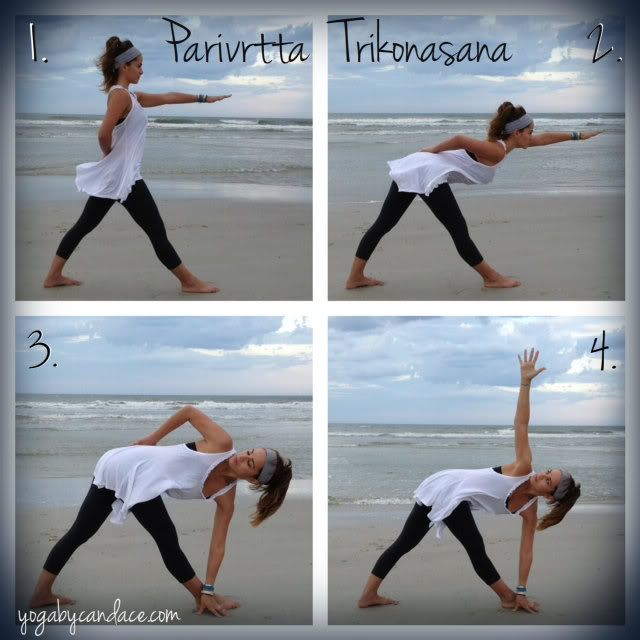
Today I'm writing about a pose that is, admittedly, not one of my favorites...mostly because it is so challenging. It doesn't look so challenging, though, but believe me, it is!! The challenge comes from the fact that it works so many parts of your body- spine, legs, chest, lungs, I mean the list really goes on and on. So here we go.
How to do it: {Photo 1} Step about 3 to 4 feet apart, right foot in front, turning your left foot out slightly so your hips face forward. Inhale the spine long and bring your left arm out in front and your right hand to your sacrum.
{Photo 2} Exhale and send your upper body as far as you can comfortably go, reaching forward with energized fingers, feeling one long line of energy from your left fingertips all the way down the spine.
{Photo 3} Inhale and place your left hand down on the outside of your right foot (or inside, if that's easier for you). Exhale and twist from the navel and begin to turn your gaze up. Beginners may need to stay here and work up to step 4 over the next few times they practice this pose.
{Photo 4} Inhale your right arm up straight up and gaze at your right thumb. Maintain energized arms and fingers, lift the kneecaps. Inhale to lengthen the spine, exhale to go slighter deeper in the twist. Exhale to come out of the pose.
Benefits: Strengthens the legs, Stretches the hips, spine and legs. Improves balance. Stimulates abs and lungs. Opens chest. Helps back pain.
Tips: Once you get your feet in position, you may find it helpful to shimmy the front foot to the right a bit (to the left, when doing the other side). This will help people with naroow hips to maintain balance better.
